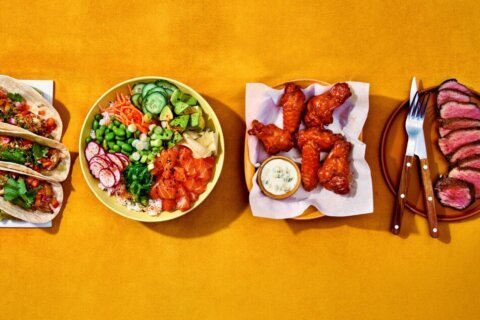Let’s face it: A sporting event without snacks is like a Bar Mitzvah without a smorgasbord — possible, but not as much fun! For many of us, snacks in the stands tug on our memories, where food is a vehicle for reliving our youth, a time when dietary concerns were not an issue. But since we’re not out there in the field running around, we now we have to keep score of what we consume.
The National Hot Dog and Sausage Council estimates that baseball fans will consume more than 18.5 million hot dogs and nearly 4.2 million sausages during the 2015 Major League Baseball season. Although a dog can set you back anywhere from 300 to 500 calories, there are several stadium items that might not put a strike against your dieting efforts — though they may hurt your wallet.
Aramark, a food supplier to many of the stadiums nationwide, published a statement saying fans spend about 25 percent more on food and beverages than they did five years ago. Food and beverages offered have become more trendy (think sushi and craft beers), more personalized (say, gluten-free and kosher) and more healthy (salads and fruit, for example). Even with decreased ticket sales, attendees and their guests are often drawn to the array of foods as much as the game itself.
Let’s take a look at some classic ballpark cuisine and weigh whether it’s best to spend your money (and calories) at the game — or if you should bring your own snack.
1. Popcorn
This reliable king of crunch and source of fiber can be a healthy snack, if made correctly. Whether you air pop it or use microwavable popcorn, many brands now sell 100-calorie packages, which will cost you an average of 80 cents per bag. Even if you take two bags to the game, that 200-calorie hit doesn’t even come close to the 2,473 calorie setback you could face if you order the stadium’s souvenir bucket — which, by the way, costs $12.
If you’re bringing your own microwaveable bag, check labels to make the portion within is actually for one person since some brands shove over four servings into one bag. For those, you’d need to multiply all numbers on the food label by four.
2. Peanuts
Thousands of bags of peanuts are sold every day at stadiums nationwide. Although it’s a great idea to eat nuts that you have to crack open and take apart (as opposed to eating shelled nuts by the handful), those peanuts clock in at 840 calories for an 8-ounce bag and 1,260 calories for a 12-ounce package.
Unless you’re sharing that bag with other fans in your section, you’re better off going nuts at home and packing small portions of nuts in snack-sized bags. In fact, why not add a little variety and include almonds, cashews, walnuts and dried fruit? Nuts are satisfying and delicious, and they even provide protein to help you feel fuller longer. Look for nuts that already come portioned in 100-calorie snack bags.
3. Ice cream
Many stadiums are offering an array of healthier options including smoothie stands and frozen yogurt vendors that could dish out leaner choices than premium ice cream. Just go easy on the toppings, such as hot fudge, sugary nuts and crushed candy, which can contain more calories than the frozen dessert itself.
4. Sandwiches
Perhaps the least expensive way to save on your sandwich is to brown bag it, but in hot summer temperatures, food safety could be a concern. Unless you’re bringing a nut butter sandwich, I’d seek out a meal that has been refrigerated or heated properly at the stadium. Choose turkey or grilled sandwiches served on bread instead of on a giant sub roll. Even if you go for a sandwich with excess bread, you’re still likely better off than choosing fried chicken nuggets paired with a serving of 1200-calorie fries and an adult beverage. Those choices could supply you with two days-worth of calories.
5. Beverages
Although you’re not permitted to bring your own alcoholic beverages into a stadium, in most venues, you can carry in an unopened, soft-sided, single-serve container such as small milk cartons or juice boxes. You may also be able to tote clear, factory-sealed plastic water bottles that are 30 ounces or smaller (depending on the park) or empty plastic sports bottles. Cans, thermoses and glass or aluminum bottles are generally not permitted. A bottle of water in the stadium will cost around $4.50, but bringing one from the 24-pack case you have at home will only set you back 25 cents.
You may not want to schlep snacks every time you go to a game, but if you enjoy this form of entertainment or if you have season tickets, doing so occasionally can be game changers for your weight and wallet.
More from U.S. News
Healthy Snacks for When You Feel Hangry
Summer Workouts: How to Handle the Heat
5 Tips for Cheap and Healthy Stadium Eating originally appeared on usnews.com







